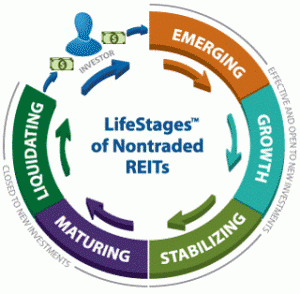Johnathan Rickman | Blue Vault
Preferred stock, or “preferreds” for short, are traded and nontraded securities that sponsors issue to raise capital while providing different pathways for investing in a particular investment strategy.
Real estate investment trusts (REITs) and business development companies often raise capital by issuing preferred stock. NexPoint Diversified Real Estate Trust, a listed REIT (NYSE:NXDT), is one such offering that has both a listed (NXDT-PA) and a nontraded preferred stock option. We spoke with members of NexPoint’s team to explore the REIT’s different investment options and to better understand how preferreds work. But first, some basics.
What is Preferred Stock?
Preferred stock is a class of shares that are senior to common stock and thus give the holder priority on dividend payments and assets over common shareholders. Another perk: Dividends can be cumulative, meaning any dividends on preferred stock that are unpaid accrue and must be paid in arrears before any dividends on common shares may be paid.
Some preferreds are also redeemable, meaning they can be sold back to the issuer subject to a sliding scale of fees based on how long they were held.
The money that sponsors raise from preferred stock is often used to back new investment opportunities and support a fund’s general operations. As we’ll see, investors typically use preferreds for diversification generally, and nontraded preferred stock, specifically, for steady income.
Common Considerations
Common considerations associated with preferreds include:
• Illiquidity: Nontraded preferred shares can be more difficult to sell than traded preferreds. Redemption policies may include fees, waiting periods, or caps on how much can be redeemed at a time.
• Complex Terms: Redemption schedules, dividend recapture clauses, and voting rights can vary widely and be difficult to understand.
• Call Risk: Issuers may redeem shares early, especially if interest rates drop, leaving investors to reinvest at lower yields.
• Interest Rate Sensitivity: Rising interest rates can make fixed dividends less attractive. Conversely, lower rates can make fixed dividends more attractive.
As rates change, nontraded preferreds’ stated value typically remains stable, says Micah Jordan, NexPoint Senior Director of National Accounts. Jordan goes on to clarify how dividends for preferred stock generally work:
“Upon issuance, the preferred dividend is fixed,” he said. “The company can issue a new series of preferreds at a different dividend level, but once you are locked into the investment, the REIT has a contractual obligation to pay you your preferred dividend percentage based upon the rate at issuance.”
The NexPoint Example
Watch this space for “Preferred Stock Part Two: The NexPoint Example,” in which we use NXDT as a case study for clarifying the different opportunities that common and preferred shares offer.
Blue Vault tracks nontraded preferred stock offerings as part of its research into private markets for credit, real estate, and equity. Learn about Blue Vault membership and how our performance data can help build your advisory practice. Are you an asset manager, broker-dealer, or other entity? Contact us today to see how we can help you.











